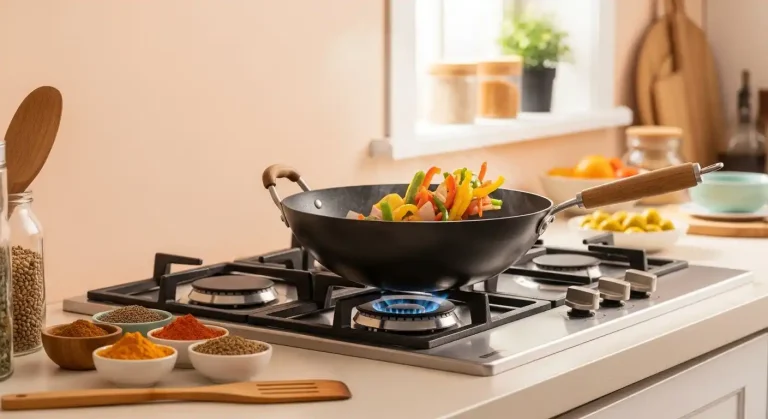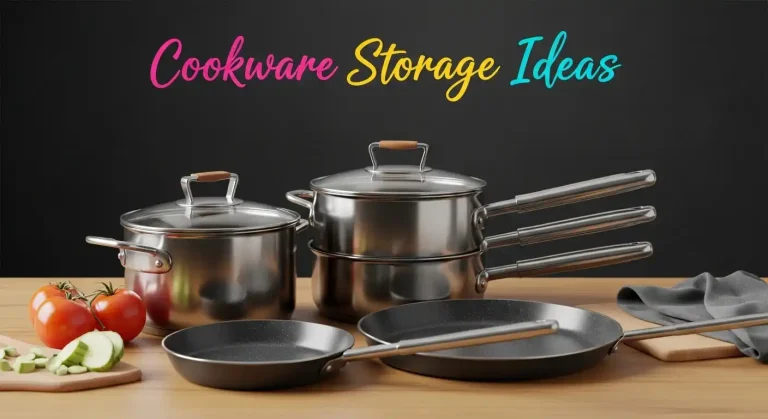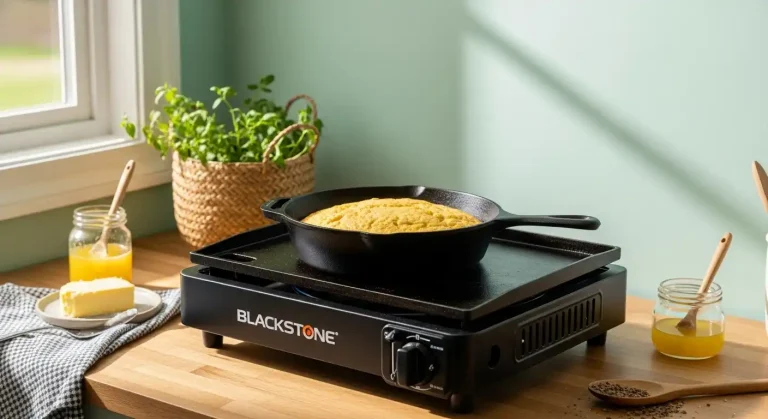Does Carbon Steel Work on Induction? A Comprehensive Guide
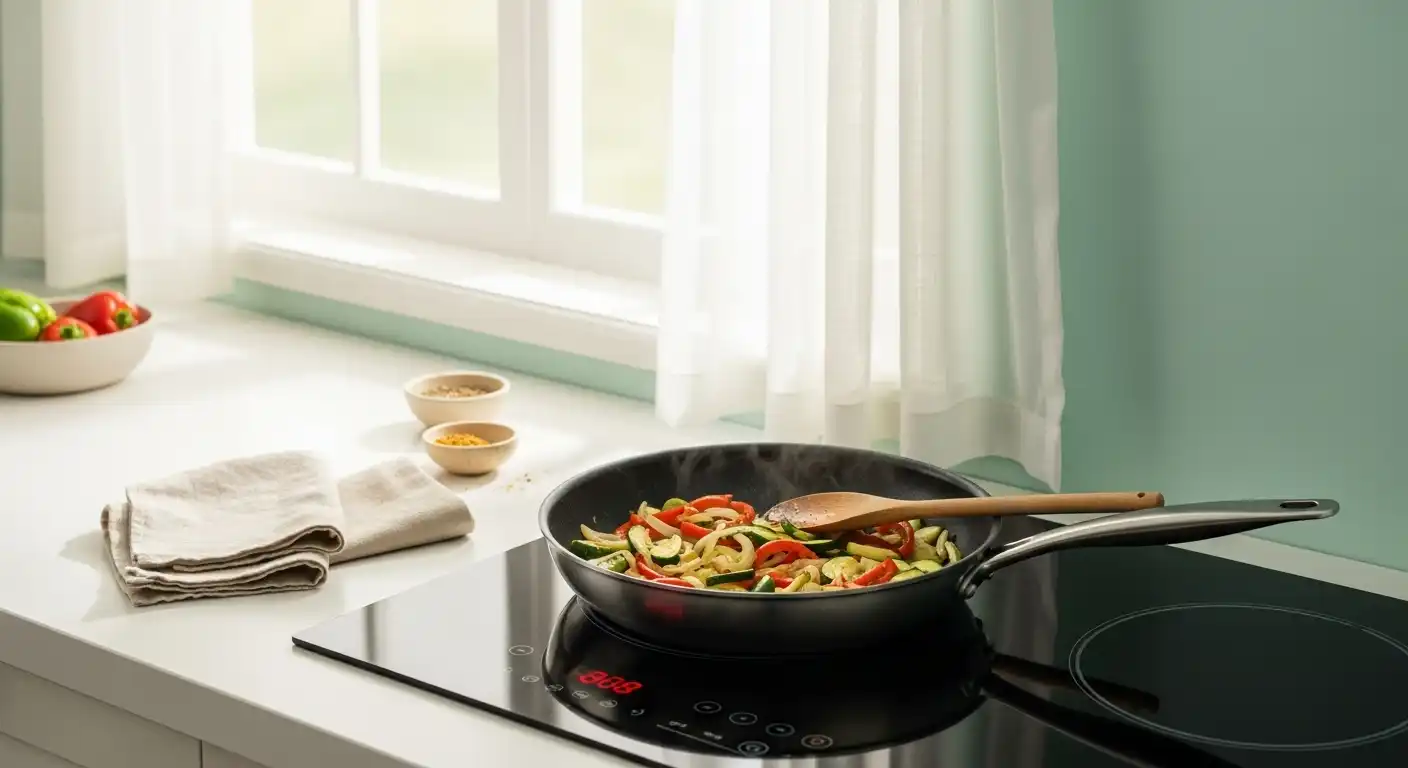
Induction cooking has revolutionized modern kitchens with its efficiency, precision, and sleek design.
But for those eyeing a trusty carbon steel pan or wok, a pressing question arises: Does carbon steel work on induction?
This blog post dives deep into the compatibility of carbon steel with induction cooktops, exploring its benefits, limitations, and practical tips to ensure you get the most out of your cookware.
What Is Induction Cooking?
Induction cooktops use electromagnetic fields to heat cookware directly, offering rapid heating and precise temperature control.
🎄 Christmas & Year-End Amazon Deals !
Don’t miss out on the best discounts and top-rated products available right now!
*As an Amazon Associate, I earn from qualifying purchases.
Unlike gas or electric stoves, induction requires cookware with magnetic properties to function effectively.
This is where material compatibility comes into play. Not all cookware works on induction, so understanding how carbon steel performs is key for anyone considering this material for their kitchen.
Understanding Carbon Steel Cookware
Carbon steel is a popular choice for professional chefs and home cooks alike.
It’s lightweight, durable, and excellent at retaining heat, making it ideal for searing, frying, and stir-frying.
Similar to cast iron but lighter and smoother, carbon steel develops a natural non-stick patina when seasoned properly.
But does its composition make it suitable for induction cooking?
Does Carbon Steel Work on Induction?
The short answer is yes—carbon steel works exceptionally well on induction cooktops.
Carbon steel contains iron, which makes it ferromagnetic and compatible with the magnetic fields generated by induction burners.
When placed on an induction cooktop, carbon steel pans and woks heat up quickly and evenly, providing consistent cooking results.
This compatibility makes carbon steel a fantastic choice for induction users who want high-performance cookware.
Why Carbon Steel Shines on Induction
Carbon steel’s magnetic properties ensure it responds efficiently to induction’s electromagnetic fields.
This results in faster heating times compared to traditional stovetops.
Additionally, carbon steel’s ability to withstand high temperatures makes it perfect for tasks like searing steaks or stir-frying vegetables.
Its versatility and induction compatibility make it a go-to for many kitchens.
🎄 Christmas & Year-End Amazon Deals !
Don’t miss out on the best discounts and top-rated products available right now!
*As an Amazon Associate, I earn from qualifying purchases.
However, not all carbon steel cookware is created equal. The thickness and construction of the pan can affect its performance on induction, which we’ll explore later.
Benefits of Using Carbon Steel on Induction
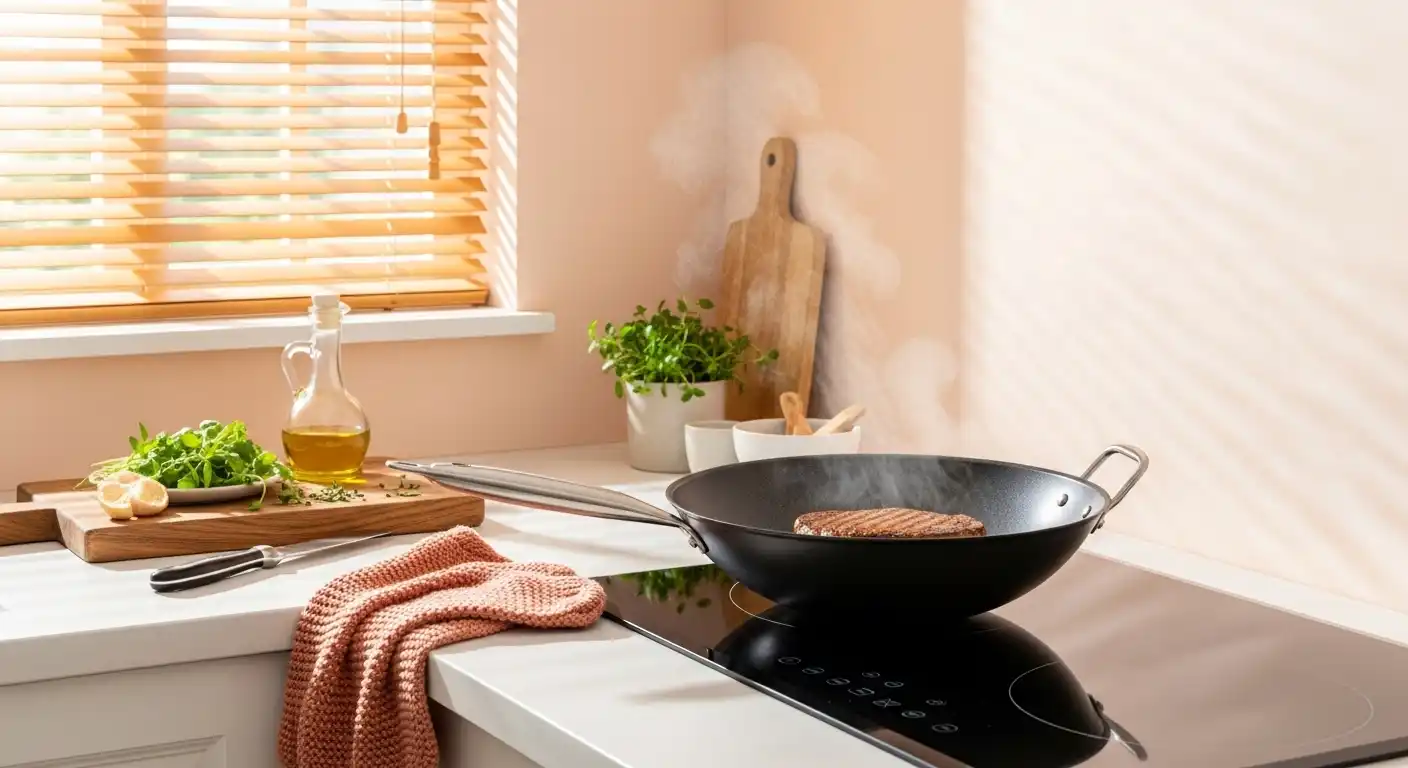
Rapid and Even Heating
Carbon steel’s excellent heat conductivity ensures quick and uniform heating, reducing hot spots that can burn food.
This is particularly useful for induction cooking, where precise heat control is a major advantage.
Durability and Longevity
Carbon steel is incredibly durable, resisting warping even under high heat.
With proper care, a carbon steel pan can last for decades, making it a worthwhile investment for induction users.
Versatility
From woks to skillets, carbon steel cookware handles a wide range of cooking techniques.
Whether you’re stir-frying in a carbon steel wok or baking cornbread in a skillet, it performs admirably on induction.
Natural Non-Stick Properties
When seasoned correctly, carbon steel develops a slick patina that rivals non-stick coatings without the chemicals.
Learn more about how to season a carbon steel wok to achieve this benefit.
Challenges of Using Carbon Steel on Induction
While carbon steel is generally induction-friendly, there are a few challenges to keep in mind.
Thickness Matters
Thinner carbon steel pans may not distribute heat as evenly on induction, leading to potential hot spots.
Opt for thicker-gauge carbon steel for better performance.
🎄 Christmas & Year-End Amazon Deals !
Don’t miss out on the best discounts and top-rated products available right now!
*As an Amazon Associate, I earn from qualifying purchases.
Flat Base Requirement
Induction cooktops require cookware with a flat base for maximum contact with the cooking surface.
Some carbon steel woks with rounded bottoms may not work as effectively unless designed specifically for induction.
Seasoning Maintenance
Carbon steel requires regular seasoning to maintain its non-stick surface and prevent rust.
This maintenance is straightforward but essential, especially for induction users who rely on consistent performance.
How to Choose Induction-Compatible Carbon Steel Cookware
Not all carbon steel cookware is optimized for induction. Here are key factors to consider when selecting your pan or wok:
Check for Ferromagnetic Properties
Ensure the cookware is labeled as induction-compatible. Most carbon steel pans meet this requirement, but it’s worth confirming with the manufacturer.
Look for a Flat Base
For optimal performance, choose carbon steel cookware with a flat bottom to maximize contact with the induction surface.
This is especially important for woks, as traditional rounded woks may not sit flush.
Consider Thickness
Thicker carbon steel pans (around 2-3mm) provide better heat retention and distribution, making them ideal for induction cooking.
Opt for Pre-Seasoned Options
Some carbon steel cookware comes pre-seasoned, saving you time and effort. This is especially helpful for beginners new to carbon steel maintenance.
Tips for Using Carbon Steel on Induction
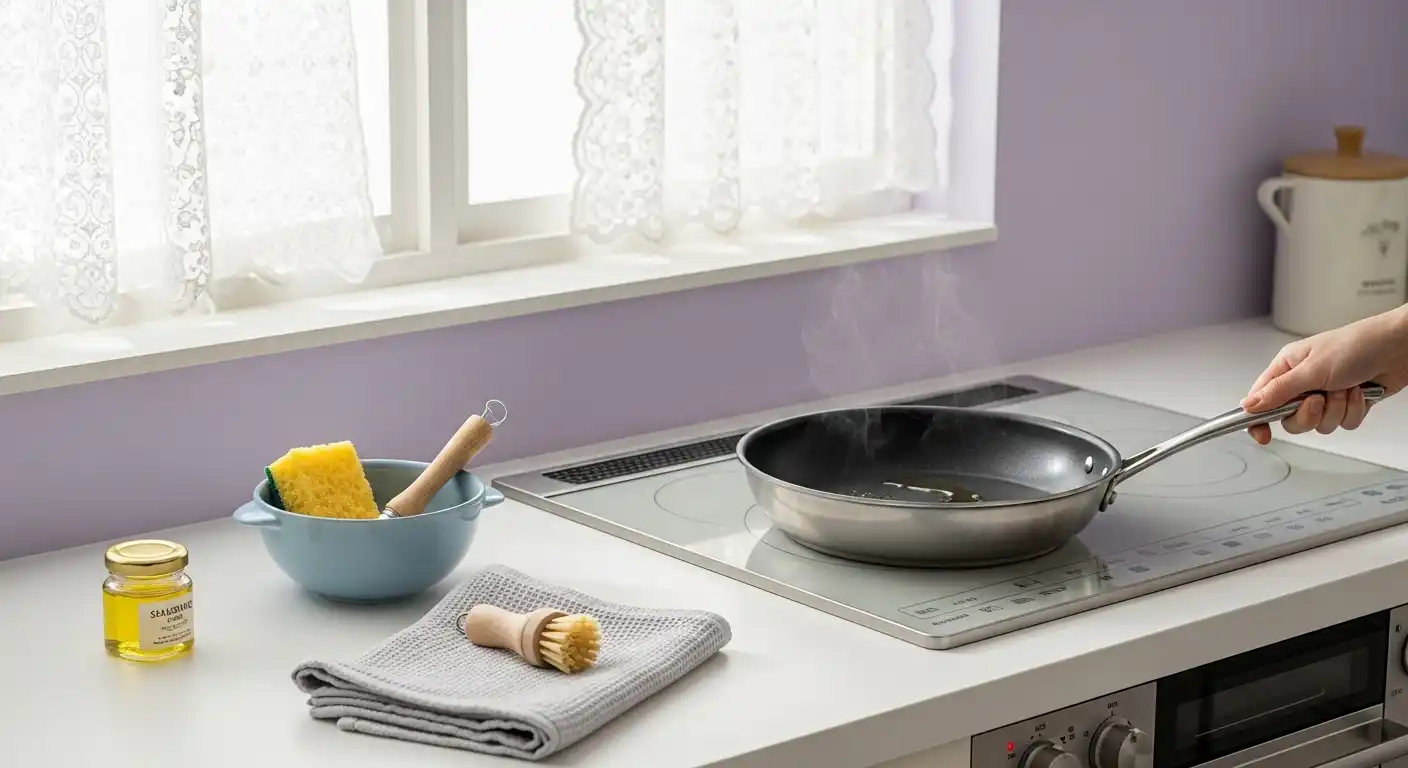
To get the best results from your carbon steel cookware on an induction cooktop, follow these practical tips:
Preheat Properly
Allow your carbon steel pan to preheat on low to medium heat before adding oil or food.
🎄 Christmas & Year-End Amazon Deals !
Don’t miss out on the best discounts and top-rated products available right now!
*As an Amazon Associate, I earn from qualifying purchases.
This helps create an even cooking surface and enhances the non-stick properties.
Season Regularly
Regular seasoning maintains the pan’s patina and prevents rust.
Check out this guide on seasoning a carbon steel wok for detailed steps.
Clean Gently
Avoid harsh detergents or abrasive scrubbers, as they can strip the seasoning.
Clean with hot water and a soft sponge, then dry thoroughly to prevent rust.
Store Properly
Store your carbon steel cookware in a dry place and apply a thin layer of oil to prevent corrosion, especially if you live in a humid climate.
Common Myths About Carbon Steel on Induction
Myth: Carbon Steel Doesn’t Work on Induction
As we’ve established, carbon steel is highly compatible with induction due to its ferromagnetic properties.
This myth likely stems from confusion with non-magnetic materials like aluminum or copper.
Myth: Carbon Steel Woks Turn Black and Ruin Induction Cooktops
While carbon steel woks do develop a dark patina over time, this is a natural and desirable process. It doesn’t harm induction cooktops.
Learn more about why carbon steel woks turn black.
Myth: Carbon Steel Is Unsafe for Health
When properly seasoned and maintained, carbon steel is perfectly safe for cooking.
For more details, read about carbon steel wok safety.
🎄 Christmas & Year-End Amazon Deals !
Don’t miss out on the best discounts and top-rated products available right now!
*As an Amazon Associate, I earn from qualifying purchases.
Carbon Steel vs. Other Induction-Compatible Materials
How does carbon steel stack up against other induction-friendly materials like cast iron or stainless steel?
Carbon Steel vs. Cast Iron
While both are induction-compatible, carbon steel is lighter and heats up faster than cast iron.
For a detailed comparison, check out iron vs. carbon steel woks.
Carbon Steel vs. Stainless Steel
Stainless steel is non-reactive and low-maintenance but lacks the natural non-stick properties of seasoned carbon steel.
Carbon steel also heats more evenly on induction in many cases.
Caring for Your Carbon Steel Cookware
Proper care ensures your carbon steel pans and woks perform optimally on induction.
Seasoning is the cornerstone of maintenance, creating a protective layer that enhances non-stick properties and prevents rust.
Avoid soaking carbon steel in water for long periods, as this can lead to rust. Instead, clean immediately after use and store with a light coating of oil.
Regular use also helps maintain the seasoning, as the oils from cooking reinforce the patina over time.
Is Carbon Steel Right for Your Induction Kitchen?
If you’re looking for versatile, durable, and high-performing cookware for your induction cooktop, carbon steel is an excellent choice.
Its compatibility, rapid heating, and natural non-stick properties make it a favorite among cooks.
However, it does require some maintenance to keep it in top shape.
If you’re willing to invest a little time in seasoning and care, carbon steel can elevate your induction cooking experience.
Conclusion
So, does carbon steel work on induction? Absolutely. Its magnetic properties, combined with its durability and versatility, make it a standout choice for induction cooktops.
🎄 Christmas & Year-End Amazon Deals !
Don’t miss out on the best discounts and top-rated products available right now!
*As an Amazon Associate, I earn from qualifying purchases.
Whether you’re searing, stir-frying, or sautéing, carbon steel delivers consistent results with proper care.
Ready to explore carbon steel for your induction kitchen? Start with a quality pan or wok, season it well, and enjoy the benefits of this timeless cookware material.

